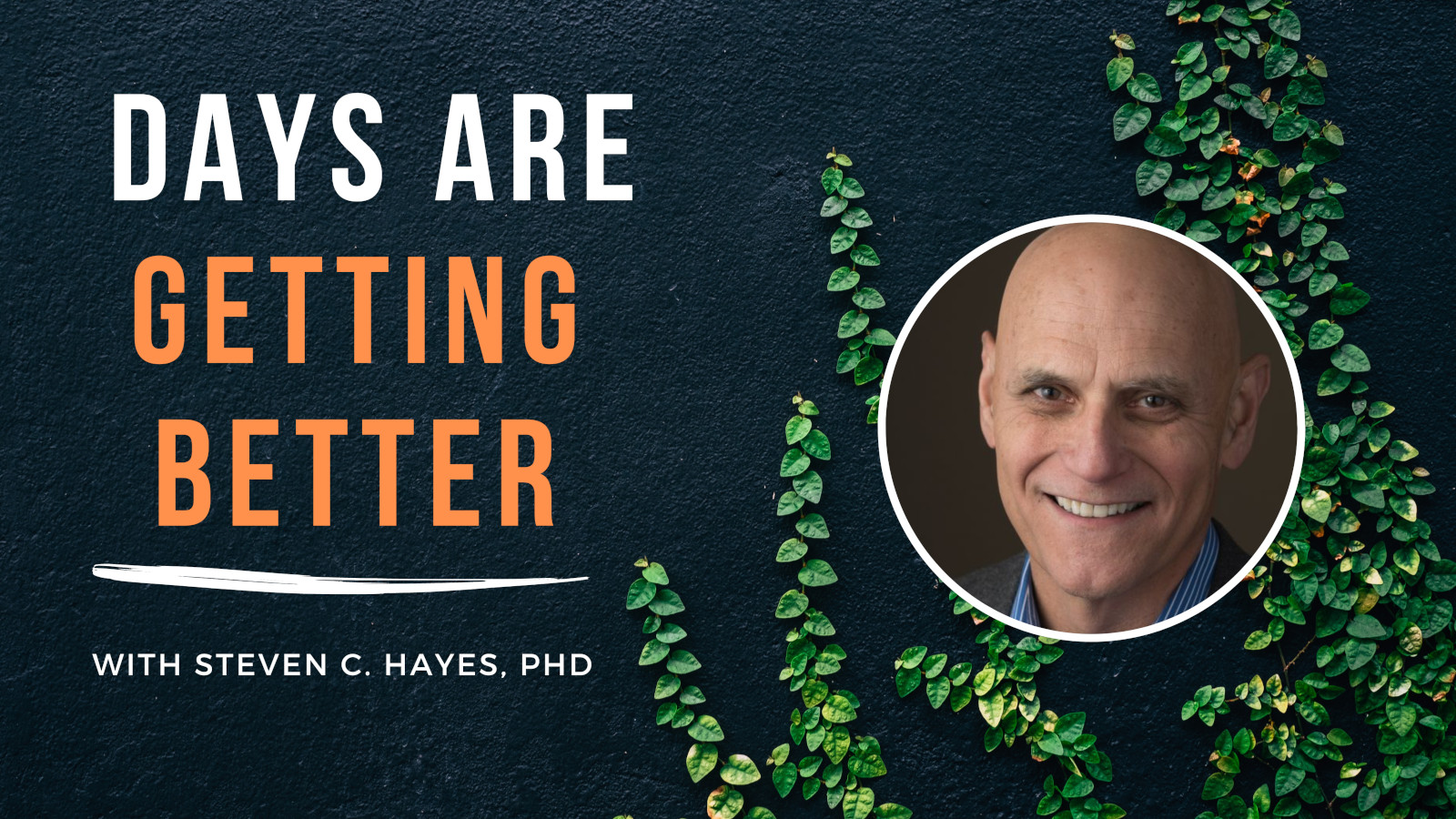Suppose you feel depressed after a series of misfortunes, and you seek therapeutic help. After an initial assessment, the therapist provides you with a diagnosis, and then starts treatment by following a structured protocol; teaching you how to deal with self-critical thoughts and difficult feelings in a step-by-step manner. At the end of your twelfth session, your depression appears to be in noticeable decline, and so your therapist decides to end the treatment.
This, in a nutshell, is how evidence-based therapy is commonly practiced. And although it has been shown to be helpful for people with a wide range of psychological ailments, it still leaves much to be desired. The standardized approach doesn’t account well for people’s individuality. It is focused on alleviating “symptoms” of an assumed latent disease, which may not fit your own aspirations nor your own view of what you are struggling with. And worse yet: the broader range of events or processes of change that initiated or maintained your struggle and that can lead to problems in other areas or in this same area in the future may remain untouched, leaving you more vulnerable to additional difficulties.
The Alternative: How To Make Therapy More Effective
Evidence-based therapists have been following the standardized approach for more than half a century, but the impact of psychotherapy has stalled or even deteriorated. Simply put, there is scant evidence that the standard approach is making therapy more effective over time.
Fortunately, there are viable alternatives. A recent meta-analysis by researchers from the University of Sheffield, compared the mental health outcomes of two groups of people: those following standardized treatment and those being helped with more personalized care. The results showed a small yet significant advantage of personalized treatment over the standardized approach: when therapy was tailored to people’s personal needs, they got better mental health outcomes.
Although the effect size was small, across large populations this is still a difference in thousands (if not millions) of people being helped. Furthermore, in the meta-analysis, personalization was defined as treatment centered on clients’ needs. If we go a step further, and personalize treatment by taking into account not only people’s needs, but their entire context and skill set, and matching interventions to their ongoing circumstances and underlying methods of adjusting, we are likely to achieve even better results. We can help people get better more effectively than ever before.
We now have the technology and knowledge to fundamentally change mental health care. And in order to realize this new vision, we need to focus on two key aspects: On processes of change, and on small nudges in everyday life.
#1 Focus on Processes of Change
A process is a progression of events. For example, suppose you have a restless night, and so you struggle being productive at work, which leads you to feel guilty and be self-critical. One event caused another, which caused a third. Uncovering people’s processes therefore means understanding how the events in their life are related to each other, and what leads to what. Oftentimes, processes are self-reinforcing – they maintain themselves. For instance, if you ruminate at night about your lack of productivity, you are likely to miss crucial sleep yet again, which will sabotage your efforts to be productive for the next day. In a way, all of your experiences in your day-to-day life are part of smaller and bigger processes nested into self-sustaining networks.
By uncovering clients’ processes, we can discern which factors contribute to their struggle, and how they are reinforced by their choices and larger context. Even more, we can learn where to best intervene, so as to effectively disrupt those factors and facilitate long-term change. This requires more than a simple analysis, because as our clients’ circumstances change, so do their processes (and thereby the means in which we can effectively facilitate change). We need more intelligent technology that allows us to continuously track clients’ ongoing processes, so we can offer the right solutions at the right moment in the right way.
This is very different from the traditional step-by-step one-size-fits-all approach that focuses on surface-level symptoms. A process-based focus adapts to not only clients’ needs, but their ongoing life circumstances, thereby enabling change at a much deeper level. Take the example from earlier. Rather than solely focusing on managing self-critical thoughts and difficult feelings, a process-oriented approach would delve deeper into the patterns that contribute to those thoughts and feelings. In this way, change can happen at the root level.
#2 Focus on Nudges in Daily Life
While traditional therapy often occurs within the confines of a therapist’s office, a more effective approach involves integrating therapeutic strategies into people’s daily life. This means supporting them in the hustle and bustle of their everyday experiences (where they most need the therapist’s support), keeping them engaged to practice meaningful skills. In this way, therapists can continuously facilitate change, leading to more sustainable growth.
Imagine receiving a gentle reminder on your phone when you’re about to face a situation that triggers your anxiety. This notification might suggest a mindfulness exercise or a perspective taking technique that you’ve learned in therapy. In small nudges, your therapist could provide real-time support and guidance precisely when you need it, helping you to navigate challenges with greater confidence and resilience. Over time, these small interventions might accumulate, leading to a gradual rewiring of your habitual responses to stressors.
Technology will play a pivotal role in delivering these personalized nudges. Smartphone apps, wearable devices, and online platforms can be harnessed to provide continuous support and tailored interventions. These tools can track your progress, adapt to your changing needs, and provide insights that empower you to take charge of your mental well-being.
Naturally, you cannot fully remove the human element – nor would you want to do so. You would still require a professional therapist who can discern the data, give meaningful advice, and provide you with emotional support. But we can use technology to help the therapist be much more effective with all of these tasks.
Realizing the new vision of mental health care
The future of mental health care holds tremendous promise. By shifting our focus to processes of change and leveraging the power of everyday nudges, we can create a more personalized, accessible, and effective therapeutic experience. As technology continues to advance, we have more and better tools at our disposal to serve people with their personal needs and individual interests. In fact, this technology exists already, and is being implemented in practices around the world (see psychflex.com for my own effort to implement this vision).
We need to recognize that change is a continuous and evolving process, deeply intertwined with the ebb and flow of daily life. Intervention needs to be more individualized than ever before –taking into account clients’ unique needs, and their continuously changing life circumstances. And it needs to be more suited to a 24/7 world, reaching clients in their own daily experiences. This is not a distant utopia; it is an achievable reality. And by harnessing technology, we can revolutionize mental health care and serve people better than ever before.
References
Nye, A., Delgadillo, J., & Barkham, M. (2023). Efficacy of personalized psychological interventions: A systematic review and meta-analysis. Journal of Consulting and Clinical Psychology, 91(7), 389–397. https://doi.org/10.1037/ccp0000820







